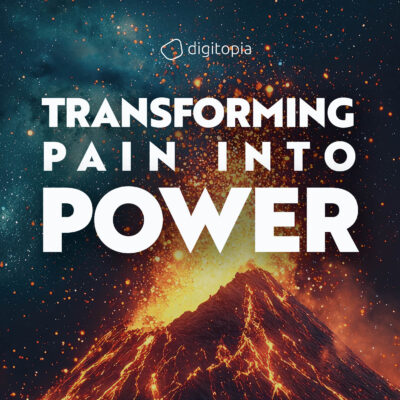
In many organizations, the middle management layer serves as a critical link between senior leadership and frontline employees. However, when middle management becomes entrenched in old ways of thinking and resistant to change, it creates what is often referred to as the “permafrost” of mid-management. This permafrost can stifle innovation, slow down transformation efforts, and create significant frustration for executives who are tasked with driving change. For leaders, particularly those involved in digital transformation and organizational change, breaking through this permafrost is essential to achieving their strategic objectives. Understanding how to address and melt this resistance can empower executives to lead their organizations more effectively.
Understanding the Permafrost of Mid-Management
The term “permafrost” in an organizational context refers to a layer of middle management that is resistant to change and innovation. These managers may be comfortable with the status quo, either because it has served them well in the past or because they fear the uncertainty that comes with change. This resistance can manifest in various ways, including passive-aggressive behavior, lack of enthusiasm for new initiatives, or outright opposition to change efforts.
The permafrost of mid-management is often a byproduct of organizational culture. In companies where longevity and loyalty are highly valued, middle managers may have risen through the ranks by adhering to established norms and practices. This can create a mindset that views change as a threat rather than an opportunity. Additionally, if middle managers feel unsupported or unprepared for change, they may dig in their heels, further entrenching the organization in outdated practices.
Case: The Resistant Manufacturing Firm
Consider “Precision Manufacturing,” a large, traditional company that has been a leader in its field for decades. The company is known for its high-quality products and its strong, stable workforce, many of whom have been with the company for 20 years or more. However, as the manufacturing industry has evolved, Precision has struggled to keep up with new technologies and processes. The company’s leadership team recognizes the need for a digital transformation to remain competitive, but they face significant resistance from middle management.
These managers, many of whom have spent their entire careers at Precision, are comfortable with the way things have always been done. They see the push for digital transformation as unnecessary and disruptive. As a result, they are slow to implement new technologies, reluctant to adopt new processes, and skeptical of the benefits of change. This resistance has created a bottleneck in the organization, making it difficult for Precision to move forward with its transformation efforts.
The Executive’s Frustration
For executives, particularly those leading transformation initiatives such as the Chief Digital Officer (CDO) or Chief Transformation Officer (CTO), the permafrost of mid-management can be a significant source of frustration. These leaders are often tasked with driving change across the organization, but their efforts are frequently met with resistance from middle managers who are more focused on maintaining the status quo than on embracing new ways of working.
This resistance can lead to a sense of helplessness, as executives find themselves unable to push through the barriers that the permafrost creates. Every new initiative is met with delays, excuses, and a lack of buy-in, making it difficult to achieve the desired outcomes. Over time, this can erode the executive’s confidence and enthusiasm, leading to burnout and a growing disconnect between the leader’s vision and the organization’s reality.
Case: The Frustrated CTO at Precision Manufacturing
Imagine Tom, the Chief Transformation Officer at Precision Manufacturing. Tom was brought on board to lead the company’s digital transformation, with a mandate to modernize operations, implement new technologies, and streamline processes to improve efficiency and competitiveness. He is passionate about the potential of digital tools to revolutionize the way Precision operates and is eager to get started.
However, Tom quickly encounters resistance from middle management. Despite his best efforts to communicate the benefits of digital transformation, he finds that many of the company’s long-serving managers are reluctant to change. They are slow to adopt new technologies, dismissive of new processes, and skeptical of the need for transformation. Tom spends countless hours in meetings, trying to build consensus and get buy-in, but progress is slow. The more resistance he encounters, the more frustrated he becomes. Tom feels like he’s hitting a wall at every turn, and his enthusiasm for the role begins to wane.
Breaking the Cycle: The Power of Empowerment and Inclusion
The key to overcoming the permafrost of mid-management and alleviating executive frustration lies in empowerment and inclusion. To melt this resistance, executives must focus on building trust, providing support, and involving middle managers in the transformation process from the outset. This means not only communicating the vision and benefits of change but also equipping middle managers with the tools, training, and confidence they need to lead their teams through the transformation.
One effective approach is to involve middle managers in the planning and decision-making process. By giving them a voice in how the transformation is implemented, executives can build buy-in and reduce resistance. Additionally, providing training and development opportunities can help middle managers feel more prepared and less threatened by the changes ahead.
Another strategy is to create quick wins that demonstrate the value of transformation. By focusing on small, achievable goals early in the process, executives can show middle managers that change can lead to positive outcomes, thereby reducing fear and resistance.
Case: The Turnaround at Precision Manufacturing
Returning to Precision Manufacturing, let’s imagine a different scenario. Recognizing the resistance from middle management, Tom decides to take a different approach. He starts by meeting with the company’s middle managers individually to understand their concerns and gather their input on the transformation process. Tom listens carefully to their feedback and involves them in shaping the transformation strategy.
He also introduces a series of training programs designed to help middle managers develop the skills they need to lead in a digital environment. These programs focus on digital literacy, change management, and leadership in times of uncertainty. Additionally, Tom identifies a few key areas where the company can achieve quick wins, such as automating a routine process or implementing a new tool that saves time. These early successes help to build momentum and show middle managers that the transformation can lead to real, tangible benefits.
As a result, the resistance from middle management begins to soften. With greater involvement in the process and the tools they need to succeed, middle managers at Precision start to embrace the changes. Tom feels a renewed sense of purpose, as the permafrost that once held the company back begins to melt away. The transformation gains momentum, and Precision moves forward with its digital initiatives, positioning the company for long-term success.
Moving Forward with Collaboration
Overcoming the permafrost of mid-management requires a commitment to inclusion, empowerment, and collaboration. For executives, breaking through this resistance is essential to driving transformation and achieving strategic goals. By involving middle managers in the process, providing them with the necessary support, and demonstrating the benefits of change, leaders can melt the permafrost and create a more dynamic, agile organization.
It’s important to remember that both you and your business deserve better than the frustrations of dealing with entrenched resistance. The challenges you face are not insurmountable—they are opportunities to build stronger relationships, foster collaboration, and drive meaningful change. By taking proactive steps to engage and empower your middle managers, you can transform your organization and lead it toward a brighter, more innovative future.
Download Your Copy Today!
For more insights on overcoming challenges like melting the permafrost of mid-management and empowering executive leadership, explore the Transforming Pain into PowerEbook. This chapter is just one part of a comprehensive guide that delves into the most pressing issues facing business leaders today, offering actionable strategies to turn obstacles into opportunities for growth and success. Discover the full range of chapters and empower yourself with the tools to transform frustration into fuel for progress.
Get your copy of the Transforming Pain into Power Ebook now and start your journey toward a more dynamic future!


